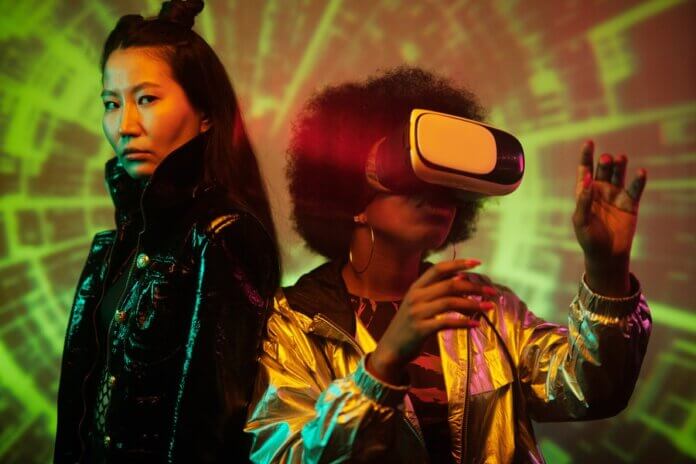Virtual fashion shows are becoming more and more popular while other aspects of virtual reality have been improving the shopping experience as a whole. Virtual dressing rooms and AR Try-On applications give customers a new way to interact with clothes.
This article will highlight the benefits of virtual features to fashion and provide a guide on the ins and outs of Virtual Reality (VR) in the fashion industry.
Defining Fashion Using VR and AR
Virtual reality is one of the biggest trends in the fashion industry in recent years. Social media has become one of the primary innovators in spreading digital fashion to the public.
Instagram and Snapchat have made great use of AR Try-On features that allow users to pick and choose from a range of virtual clothes and digital looks that they can share on their platforms.
Top fashion houses and digitally-exclusive clothes brands have also been making big strides in the virtual world. Some companies like The Fabricant have even been creating clothes like the digital dress, ‘Iridescence’, that exist purely in a digital capacity without a physical counterpart.
The Ins and Outs of Virtual Fashion Design
There are two ways for fashion design to be achieved in a virtual setting.
As with The Fabricant, the garments can be exclusively digital or VR worlds can be utilized to simply carry out the design process, giving designers more scope to experiment and craft without the limitations of the physical world.
VR fashion design provides users with a 3D view of their project whenever they wish to observe their progress. Gone are the days of drawing different perspectives individually with a pencil and paper. With VR, the entire process is available for ease of use and all-encompassing creativity.
Of course, it’s going to take a bit of practice to get used to it. As with all new skills and tools, like Google Tilt Brush, it will take some trial and error to get the process perfect.
But when the process does click, designers will have limitless scope for their imagination, garnering more freedom from the creative process than ever before.
AR is also a good tool for designing clothes, with features allowing creators to scan body types. A sense of individualism, personalization, and customization keep customers at the center of the process, allowing for a more exact tailoring service and a closer sense of collaboration.
Advantageous Features of VR Fashion Design
Before the introduction of VR, the fashion world has been one of the least sustainable industries in the world. Virtual reality can be used to counter the consequences of climate change by making the process digital and reducing the negative ethics of the industry at the same time.
Reduced Waste in VR Fashion Design
One of the biggest environmental drawbacks of fashion is the waste produced from the manufacturing of clothes. Even with recycling, there is an astronomical amount of physical products and materials getting discarded if the process goes wrong.
VR eliminates a lot of these issues as in a digital world when something goes wrong, it goes away with a mere click on the delete button.
Instantly, the positive effects of VR fashion design can be seen. There’s less pollution for a start with fewer carbon emissions being released into the atmosphere.
Furthermore, the world’s natural resources like oil, coal, and water are being more carefully preserved.
Lack of Shipping for Digital Clothes
There’s less of a need for the shipment of clothes as well. Digital fashion exists in a purely digital space and so doesn’t need to be transported or delivered, lessening the release of toxic gases into the atmosphere.
Clothes are now accessed more conveniently and can simply be uploaded to people’s phones, enabling them to continue the trend of showing off a broad array of unique outfits without harming the environment.
Ethics of the Fashion Industry
On the ethical side of things, VR fashion design reduces production times which lessens the need for laborers to be over-worked when trying to reach a deadline.
This makes the work environment in the fashion industry healthier and safer, making fashion production a lot more conscientious and helping to begin the alleviation of the negative connotations associated with fashion design.
Social Impact of VR Fashion Design
This isn’t to say that virtual fashion is a completely sustainable option as digital devices also leave a carbon footprint but the impact is significantly less drastic.
Virtual fashion is not only good for the environment but for society. A lot of fashion is designed and created for the wealthiest 1% to enjoy. Go on any number of websites for top fashion houses and you’ll see the exorbitant prices the general public could only dream of being able to afford.
VR allows fashion to become more widely available to those in lower social and economic classes, giving brands more publicity and increasing audience engagement and enthusiasm for products.
The virtual age is a positive next step in the progress of fashion. It helps to raise awareness for social and environmental issues, nurturing a more introspective and respectful work environment while also giving designers the freedom they need to continue to bring the fashion industry to greater and greater heights.

